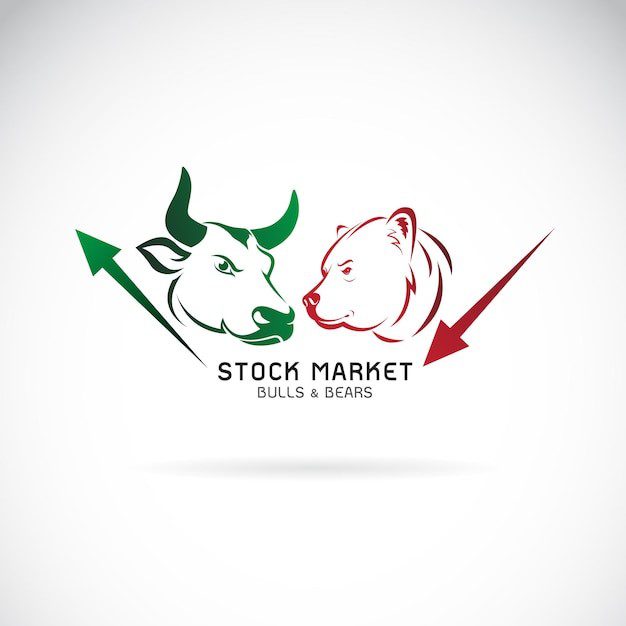A bull market is one in which prices of securities continue to rise, signaling a generally positive investor sentiment. A bear market is the opposite of that—prices fall generally due to negative investor sentiment. These two terms are mostly used in reference to the stock market, or indeed any significant market for any asset class (such as real estate). A bull market happens when there is widespread optimism about the future and investors are willing to pay more for stocks than they actually cost. This is usually because they anticipate that their value will go up even further in the future. A bear market, on the other hand, happens when there is widespread pessimism about the future and investors are willing to sell their shares at a discount compared to how much they’re worth. It’s almost like an inverse version of a bull market: People expect things to get worse rather than better – hence why it’s called a bear market.
Signs of a Bull Market
There are a number of signs that can be used to determine if the current market is bullish or bearish. The first is the price/earnings (PE) ratio. The PE ratio is used to value the price of a company based on its earnings per share (EPS). The PE ratio is the current share price divided by the EPS for that year. If the PE ratio is equal to or above its long-term average, the market is bearish and most likely in a bear market. If the PE ratio is below its long-term average, then the market is bullish. A second, and related, sign of a bullish sentiment is investor sentiment. This is measured by surveys, which can sometimes also be used to gauge the current sentiment for a bearish market. Additionally, there are sentiment indicators that chart the trading volume of stocks with high levels of enthusiasm.
Signs of a Bear Market
Again, there are a number of signs that can indicate a bear market. One is the interest rate: Bonds, which are often used as a benchmark for interest rates, are yielding higher rates than stocks. If bonds are also selling at a discount, this is a sign that stocks are overpriced. The price/earnings ratio is also used to value stocks as mentioned above. It’s important to note that while these ratios may indicate a bullish or bearish market sentiment, they are not always accurate. A third sign that may indicate a bearish market is the market capitalization. This is calculated by multiplying the current share price by the number of shares currently outstanding. The market capitalization does not account for the earnings per share, but simply the dollars available for investing in stocks.
What’s the Difference?
To be clear, to say there is a bull market does not mean that the market will always go up. Rather, it means that there is positive investor sentiment that the market will go up and people are willing to pay more for investments than they cost. In a bear market, investors are pessimistic about the future, and they’re willing to sell their investments at a discount compared to their value. One of the main differences between a bull market and a bear market is the way investors are viewing the investment landscape. In a bull market, they’re viewing the landscape through rose-colored glasses, assuming everything is going to go up. Conversely, in a bear market, investors are viewing the landscape through a pessimistic lens, assuming everything is going to go down. Another difference between the two is that a bull market is generally strong and prolonged, while a bear market is generally weak and short-lived.
Signs for determining the current market sentiments
There are many signs that indicate the current market sentiments:
- Greater interest in equities as opposed to bonds – When people are investing in stocks and other equities, it typically means they are optimistic about the future and think the market will go up. When they invest in bonds instead, it’s generally because they are pessimistic about the future and expect interest rates to go up – the opposite of what happens with stocks.
- The price of commodities is falling – Commodity prices will fall if investors are pessimistic about the future because this will make it less likely that people will buy these products as they are used in manufacturing.
- The price of gold is rising – Gold is a safe-haven investment, meaning it will rise in value when investors are pessimistic about the future.
- Interest rates rise – When interest rates rise, it means that investors are more pessimistic about the future. This could be due to the expectation that inflation will rise, or because investors are expecting a change in government that will affect the economy.
Bonds are paying higher rates of interest than usual, and equities are paying lower rates
This is perhaps one of the clearest signs that a market is in a bearish state. If bonds are paying a higher rate of interest than equity investments, this is an indication that investors are more weary of putting their money into stocks. If the 10-year treasury yields are consistently higher than the S&P 500 equity rates, it is an indication that investors are more willing to put their money into safer, and more reliable, bonds than risky equity investments. This is indicative of a generally negative sentiment toward equities and a general positive sentiment toward bonds. This shows that investors are generally pessimistic about the future of the stock market, which indicates a bearish market.
Bull vs. Bear Markets in Practice
It’s important to note that the difference between a bull market and a bear market is not a matter of a few percentage points. Rather, these are vastly different and differentiating between them is critical to understanding the current financial landscape. In a bear market, the market is generally declining and the prices of stocks are falling. In a bull market, the market is generally increasing and the prices of stocks are rising. Compare the charts to see the difference between a bull market and a bear market. If the current market is a bull market, this generally indicates that the economy is being driven by consumer spending and business investment. If the current market is a bear market, this generally indicates that the economy is being driven by government spending.
Summing up
When it comes to investing, it’s important to understand the difference between a bull and a bear market. This will help you to gauge the current sentiment toward investing, and whether stocks are likely to increase or decrease in the future. It’s also important to remember that there is a significant difference between the two: A bull market is generally strong and prolonged, while a bear market is generally weak and short-lived.




